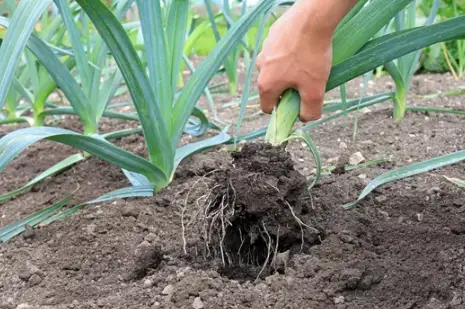Welcome, aspiring gardeners and culinary enthusiasts!
Are you ready to embark on a journey that will take your gardening skills to new heights and reward you with flavorful, homegrown leeks?
In this blog post, we will delve into the fascinating world of starting leeks from seed and guide you through the entire process, from germination to harvest.
What Are Leek Plant?
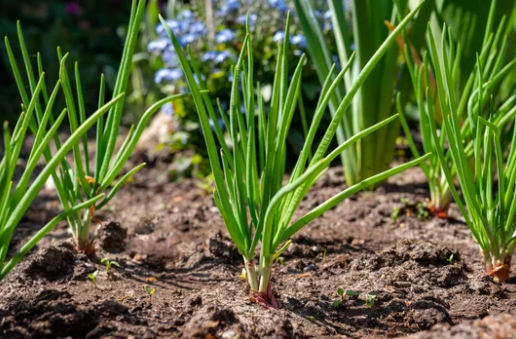
Before we dive into the nitty-gritty of growing leeks, let’s take a moment to appreciate the leek plant itself.
The leek, scientifically known as Allium porrum, belongs to the onion family and boasts a unique flavor profile that adds depth and character to various dishes.
Leeks are not only delicious but also packed with essential nutrients like vitamin K, vitamin C, and folate, making them a valuable addition to any healthy diet.
Preparing for Leek Cultivation
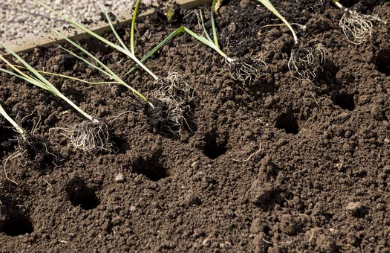
To embark on your leek-growing adventure, it’s crucial to start with careful planning and preparation.
Selecting the appropriate leek varieties based on your climate and preferences is the first step.
Consider factors such as cold hardiness, taste, and size when choosing the right leek cultivars for your garden.
Once you have chosen your preferred varieties, acquiring high-quality leek seeds from reputable sources is essential.
Look for seeds that are fresh, reliable, and ideally suited to your region. Quality seeds lay the foundation for healthy and robust leek plants.
Equipping yourself with the necessary tools and materials is another crucial aspect of successful leek cultivation.
You’ll need seed trays or containers, a well-draining potting mix, a watering can or misting bottle, and a suitable location for germination.
Having these items at your disposal will set you up for a smooth and enjoyable leek-growing experience.
Seed Starting Techniques
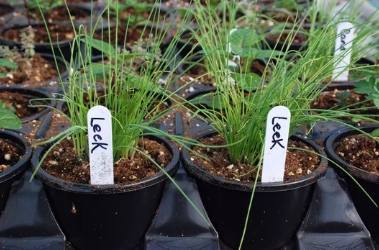
Now that you have everything you need, let’s dive into the fascinating process of starting leeks from seed.
Proper germination is vital for healthy seedlings, so let’s discuss the ideal conditions for successful leek seed germination.
Start by filling your seed trays or containers with a moist, well-draining potting mix.
Make shallow furrows in the soil and sow the leek seeds, spacing them according to the packet instructions.
Lightly cover the seeds with a thin layer of soil and mist them with water to ensure adequate moisture.
During germination, maintaining consistent moisture and temperature is crucial.
Leek seeds prefer cooler temperatures ranging between 55°F and 75°F (13°C and 24°C).
Using a seedling heat mat or placing the trays in a warm location can help ensure the optimal temperature for germination.
Transplanting Seedlings
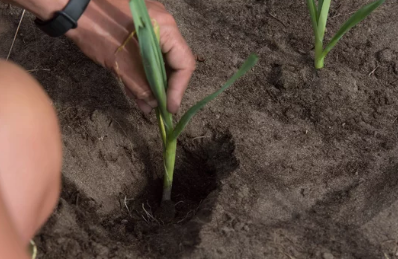
Once your leek seedlings have emerged and developed a few sets of true leaves, it’s time to transplant them into your garden bed.
But before we move forward, let’s talk about timing and preparing the soil for successful transplantation.
Transplanting leek seedlings is typically done when they are about 8-10 weeks old, or when they have reached a pencil-thin size. Choose a sunny location in your garden with fertile, well-draining soil.
Ideally, prepare the soil in advance by adding organic matter, such as compost or well-rotted manure, to enrich its nutrients.
Gently remove the leek seedlings from their trays, being careful not to damage the delicate roots.
Dig shallow holes in the prepared garden bed, spacing the leek seedlings about 6 inches apart.
Place the seedlings in the holes, ensuring that the white stem section is fully buried while leaving the green leaves exposed.
Firmly press the soil around each seedling to provide stability and optimal root-to-soil contact.
Care and Maintenance
Congratulations on successfully transplanting your leek seedlings! Now, let’s dive into the care and maintenance required to nurture them into thriving leek plants.
Watering is a crucial aspect of leek care.
Ensure that the soil remains consistently moist, but not waterlogged, throughout the growing season.
Leeks require regular and deep watering, especially during dry spells, to promote healthy root development and prevent bolting.
Fertilization is another key aspect to keep your leek plants thriving.
Leeks benefit from a balanced fertilizer application, rich in nitrogen, to support their leafy growth.
Apply a slow-release fertilizer or a liquid fertilizer according to the package instructions to provide your leeks with the nutrients they need.
Mulching around your leek plants helps to conserve soil moisture, suppress weed growth, and maintain an even soil temperature.
Apply a layer of organic mulch, such as straw or shredded leaves, around the base of the plants, taking care not to bury the stems.
Keep an eye out for pests and diseases that may affect your leeks.
Common pests include onion flies and leek moth larvae.
Consider using physical barriers, like insect netting or row covers, to protect your leeks from these pests.
Regularly inspect your plants for signs of disease, such as fungal infections, and promptly address any issues with appropriate treatments.
Growth and Development Stages

As your leek plants continue to grow, they will progress through different stages, each with its unique characteristics and requirements.
During the early growth stage, leek plants focus on establishing a robust root system.
Provide them with adequate moisture, nutrients, and weed control to ensure their healthy development.
As the plants mature, the leeks’ distinctive stalks begin to elongate.
At this stage, consider blanching the stalks to promote their tenderness and mild flavor.
This can be achieved by gradually drawing soil around the stems, leaving only the upper portion exposed.
Throughout the growth stages, monitor your leek plants for any signs of stress, nutrient deficiencies, or pest issues. Address problems promptly to maximize the plants’ growth potential.
Harvesting and Storage

The moment you’ve been eagerly anticipating has finally arrived—harvest time! Determining the optimal time for harvesting your leeks is crucial for flavor and texture.
Leeks are typically harvested when they reach a desirable size, usually between 1 and 2 inches in diameter.
However, if you prefer smaller or larger leeks, adjust your harvesting criteria accordingly.
Gently loosen the soil around the base of the leek plants, grasp the plant at its base, and gently lift it from the ground.
Once harvested, carefully clean the leeks by removing any excess soil and damaged outer layers.
Store them in a cool, dry place, preferably in a refrigerator, to prolong their shelf life.
Alternatively, you can freeze leeks for future use by blanching and properly packaging them.
Creative Culinary Uses
Your efforts have paid off, and now it’s time to reap the rewards of your homegrown leeks in the kitchen.
Leeks are incredibly versatile and can be used in various culinary creations.
From classic leek and potato soup to hearty quiches and flavorful stir-fries, the possibilities are endless.
Experiment with different recipes and let the unique taste of your homegrown leeks elevate your dishes to new heights of flavor.
Conclusion
Congratulations on mastering the art of growing leeks from seed.
So, when starting leeks from scratch, you’ve not only gained a valuable gardening skill but also unlocked the flavorful potential of homegrown produce.
Enjoy the satisfaction of nurturing these culinary gems from tiny seeds to savory stalks, and savor the delectable rewards in your kitchen.
Remember, every journey begins with a single seed.
So, gather your tools, secure quality leek seeds, and embark on this delightful gardening adventure.
May your leek-growing endeavors be fruitful, your harvests abundant, and your culinary creations truly remarkable!
Additional Resources and References:
- The Vegetable Gardener’s Bible” by Edward C. Smith – https://www.workman.com/products/the-vegetable-gardeners-bible
- The National Gardening Association’s Guide to Growing Leeks – https://garden.org/learn/articles/view/2586/
- University of California Cooperative Extension’s Leek Production Guide – https://anrcatalog.ucanr.edu/pdf/7226.pdf

